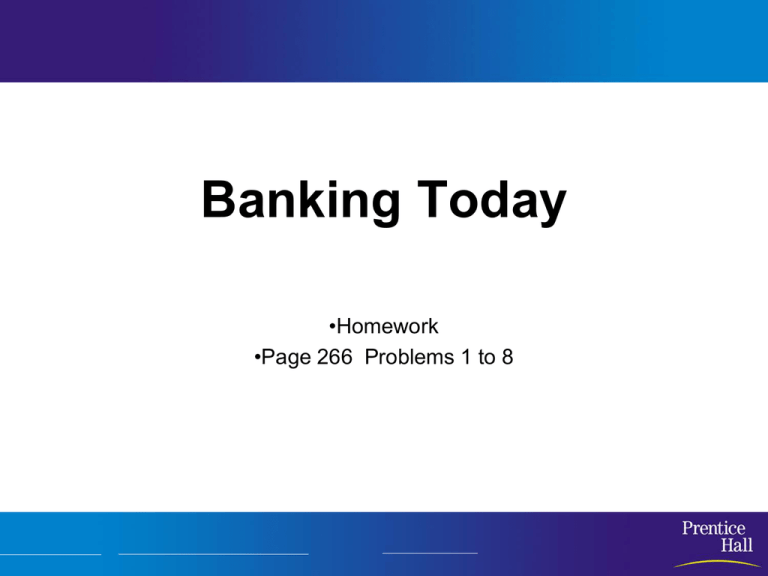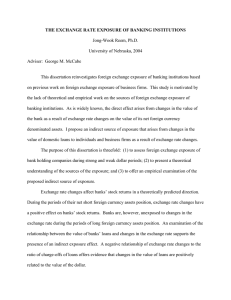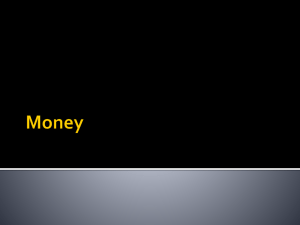Banking Today •Homework •Page 266 Problems 1 to 8
advertisement

Banking Today •Homework •Page 266 Problems 1 to 8 Measuring the Money Supply The money supply is all the money available in the United States economy. M1 M2 • M1 consists of assets that have liquidity, or the ability to be used as, or easily converted into, cash. • Components of M1 include all currency, traveler’s checks, and demand deposits. • Demand deposits are the money in checking accounts. • In 2007 M1 was $1.4 trillion and currency was $700 billion • M2 consists of all of the assets in M1, plus deposits in savings accounts and money market mutual funds. • A money market mutual fund is a fund that pools money from small investors to purchase government or corporate bonds. • M2 is sometimes called “near money”. • In 2007, M2 was $7.3 trillion Banking Services • Banks perform many functions and offer a wide range of services to consumers. Storing Money Banks provide a safe, convenient place for people to store their money. Credit Cards Banks issue credit cards — cards entitling their holder to buy goods and services based on each holder's promise to pay. Saving Money Four of the most common options banks offer for saving money are: 1. Savings Accounts 2. Checking Accounts 3. Money Market Accounts 4. Certificates of Deposit (CDs) Loans By making loans, banks help new businesses get started, and they help established businesses grow. Mortgages A mortgage is a specific type of loan that is used to purchase real estate. How Banks Make a Profit • The largest source of income for banks is the interest they receive from customers who have taken loans. • Interest is the price paid for the use of borrowed money. How Banks Make a Profit Money leaves bank Money enters bank Interest and withdrawals to customers Deposits from customers Interest from borrowers BANK Fees for services Bank retains required reserves Money loaned to borrowers: • business loans •home mortgages • personal loans Bank’s cost of doing business: • salaries • taxes • other costs Types of Financial Institutions • Commercial Banks – Commercial banks offer checking services, accept deposits, and make loans. • Savings and Loan Associations – Savings and Loan Associations were originally chartered to lend money for home-building in the mid-1800s. • Savings Banks – Savings banks traditionally served people who made smaller deposits and transactions than commercial banks wished to handle. • Credit Unions – Credit unions are cooperative lending associations for particular groups, usually employees of a specific firm or government agency. • Finance Companies – Finance companies make installment loans to consumers. Electronic Banking The role of computers in banking has increased dramatically. Automated Teller Machines (ATMs) Customers can use ATMs to deposit money, withdraw cash, and obtain account information. Debit Cards Debit cards are used to withdraw money directly from a checking account. Automatic Clearing Houses (ACH) An ACH transfers funds automatically from customers' accounts to creditors' accounts. Home Banking Many banks allow customers to check account balances and make transfers and payments via computer. Stored Value Cards Stored value cards are embedded with magnetic strips or computer chips with account balance information. Mortgage Crisis • Banks loan out money to a home owners that couldn’t afford their house by offering dangerous loans: • 1. A.R.M. (Adjustable Rate Mortgage) • 2. 110% financing • 3. Interest only • 4. Negative Am (Amortization) • 5. No doc loans. Homework • Page 266 • Problems 1 to 8 • Write out complete sentences and box your answer.





